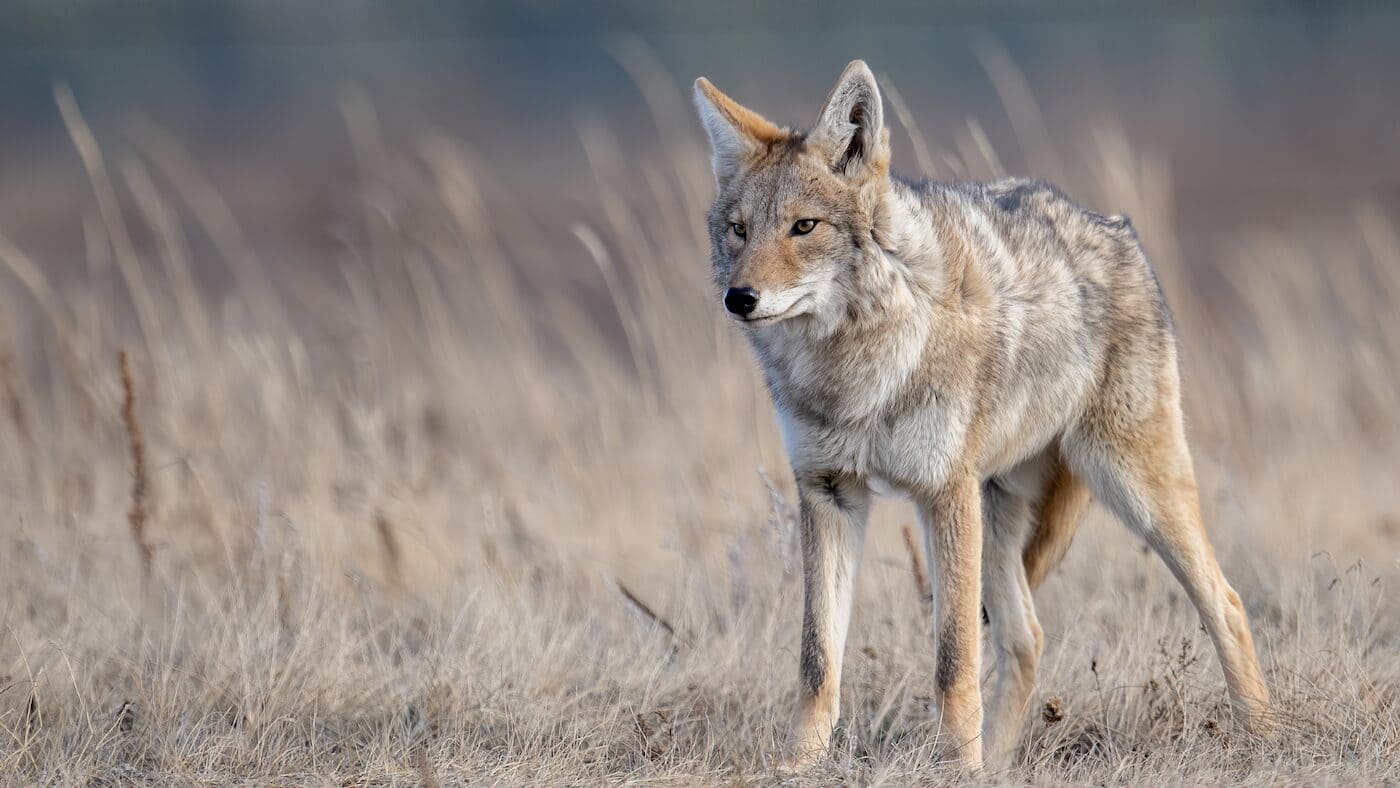As we step into coyote breeding season, which runs from January to March, there’s much to uncover about these fascinating creatures. Coyotes are endlessly adaptable and surprisingly family-oriented, yet they’re often misunderstood. This time of year brings an uptick in misinformation about them, making it all the more important to understand their behaviors and how we can safely coexist with these wild neighbors.
What Happens During Breeding Season?
On crisp winter nights, you may hear the faint echo of a coyote’s howl as twilight settles in. This is when coyotes form pairs, strengthening their bonds as they prepare to raise a family. During breeding season, their behavior shifts slightly, and it’s important to know what to expect:
- Heightened Vocalizations: Coyotes communicate constantly, and during this time, their yips and howls serve as both a serenade to their mate and a warning to others to stay away from their territory.
- Increased Territoriality: Coyotes become more defensive, especially as they seek out dens for their future pups. If you see one standing its ground or acting boldly, it’s likely protecting its space.
- Dawn and Dusk Activity: While coyotes are naturally crepuscular (most active at dawn and dusk), their presence during these hours becomes even more noticeable as they scout for food and monitor their territory.
Yet, this is just the beginning…
What happens during these months sets the stage for the rest of the year. Understanding the life cycle of a coyote adds a new layer of appreciation for these resilient animals. Here’s what their year looks like:
The Coyote Life Cycle
- Mating and Gestation (January – March): The alpha pair—partners for life—move through the underbrush, scouting dens and reaffirming their bond. With a 60–65 day gestation period, they use this time to prepare for their pups’ arrival.
- Denning and Pup-Rearing (March – May): Spring arrives, bringing a litter of 4–7 pups nestled in a den. The mother stays close, nursing her young, while the father hunts tirelessly to bring back food. Sometimes, older siblings stay behind to help—a true family effort.
- Pup Development (June – August): The pups begin exploring, stumbling out of the den on wobbly legs as they play and learn survival skills. Their parents teach them essential lessons like hunting and navigating their territory.
- Dispersal (Fall – Early Winter): As the pups mature, some will leave to start their own journeys. These adventurous coyotes, known as transients, travel far and wide to find unclaimed territories and mates.
Urban Coyotes: A Different Way of Life
In urban areas, transient coyotes live a completely different lifestyle. In places like Los Angeles, the story takes an intriguing twist. Urban landscapes present both challenges and opportunities, especially for young coyotes searching for space. Perhaps you’ve seen one weaving through park trails, darting across greenbelts, or sniffing out a discarded sandwich. These are the explorers—the ones navigating a human-dominated world in search of food, shelter, and survival. This type of solo or duo lifestyle is much less common in the wilderness.
- Larger Ranges: Transient coyotes often roam areas up to 100 square miles, compared to the 5–10 square miles of a settled pack.
- Resourceful and Opportunistic: With no territory to call home, they rely on what the city provides—rodents, garbage, and even water from sprinklers.
- Conflict Avoidance: Transients are less likely to provoke territorial disputes, focusing instead on survival and movement.
While they may appear bolder in urban areas, this is a result of necessity, not aggression. Their adaptability is a testament to their resilience, but it also means we need to stay vigilant and mindful of how we coexist.
What Does This Mean for Us?
Coyotes are often cast as villains, but much of this is rooted in myths and misunderstandings. You’ve likely heard stories of coyotes luring dogs into ambushes. The reality? Coyotes are territorial animals. If a dog chases one, the coyote may lead it away from its den or young to protect its family. This is a defensive response, not a cunning trap. Contrary to popular belief, coyotes are not more aggressive during breeding season—however, they are more defensive.
How to Stay Safe
- Keep Pets Safe: Always leash your dog when walking in areas with known coyote activity. Don’t let pets roam off-leash, especially near wooded areas or trails during dawn and dusk when coyotes are most active. Remember: Coyotes fear humans, but they do not fear small pets. Outdoor cats, chickens, and other small animals should be kept in secure enclosures.
- Avoid Feeding Coyotes: Coyotes are naturally wary of people, but if they associate humans with food, they may become bolder. Never feed coyotes—this leads to habituation, which can increase conflict.
- Haze Confidently: If you encounter a coyote, stand tall, wave your arms, and make loud noises. Carry a whistle or noisemaker when walking in coyote areas. Do not run. Instead, back away slowly while ensuring the coyote has an easy way to escape the situation.
Final Thoughts
Coyotes aren’t out to get us; they’re simply doing their best to survive and protect their families. By understanding their behavior and taking responsible precautions, we can coexist peacefully with these remarkable wild neighbors.
Beyond their misunderstood reputation, coyotes play a vital role in maintaining a healthy ecosystem. As top predators in many environments, they help control rodent populations, keep prey species in balance, and even regulate the spread of disease. Their presence ensures that ecosystems remain diverse and functioning, preventing overpopulation of smaller animals that could otherwise disrupt the balance of nature.
By respecting their role in the environment and learning how to coexist with them, we not only help protect wildlife but also contribute to the overall health of our shared landscapes.

